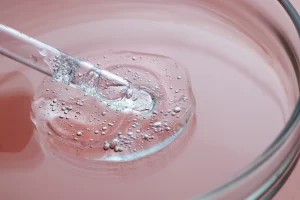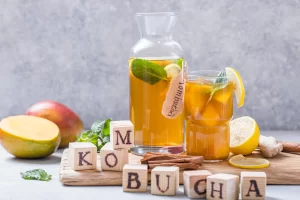Formulating baby care products is not simply a milder version of adult skincare. It’s a science that demands careful ingredient selection, precise formulation, and a deep understanding of infant skin physiology.
At our OEM manufacturing facility, we work closely with brand owners to develop baby products that are not only effective but also meet the highest safety standards.
Understanding Baby Skin: Why It Needs Special Care?
Baby skin is structurally and functionally different from adult skin. This impacts how products
should be formulated.
Key Characteristics:
- Thinner and More Fragile Skin
A baby’s skin is about 20–30% thinner than an adult’s. This makes it more permeable and
vulnerable to irritants, allergens, and infections. Minor friction or exposure to harsh products can easily cause redness, dryness, or rashes. - Immature Skin Barrier
The stratum corneum (outermost layer) is still developing. This means baby skin is less
effective at locking in moisture and more prone to water loss (TEWL – transepidermal water loss). It can dry out quickly and become irritated. - Developing Immune System
A baby’s skin has an immature immune response and lower levels of protective oils (like
sebum). It’s more prone to inflammation and less able to fight off harmful microbes or
environmental aggressors. - Higher Sensitivity to External Factors
Babies are more sensitive to UV radiation, heat, cold, and pollution. They burn more easily in the sun and lose heat faster in cold environments. Protective mechanisms like sweating and pigmentation are not fully developed. - Needs Support for Healthy Skin Microbiome
A baby’s skin microbiome is still in the early stages of development. Gentle skincare products help support a healthy balance of good bacteria and prevent overgrowth of harmful ones. Because of these factors, every ingredient in a baby product must be scrutinized for safety, irritancy, and absorption.

Safe Formulation Practices for Baby Products
- Minimalist Formulation
Less is more when it comes to babies. We recommend limiting formulas to essential ingredients only, with no unnecessary fragrances, colors, or active compounds. - pH-Balanced for Skin
Ideal pH range for baby products is between 4.5 and 6.0, which supports the acid mantle and reduces irritation. - Non-Irritating, Non-Sensitizing
All ingredients should be tested for skin compatibility and allergenic potential, especially on compromised or sensitive skin. - Preservation with Caution
Preservatives are necessary for safety, but must be used in low concentrations and be proven safe for infants. Always avoid controversial or sensitizing preservatives.

Recommended Ingredients for Baby Products
These ingredients are commonly used in high-quality baby formulations due to their gentleness and proven safety profile:
Cleansers
- Cocamidopropyl Betaine (mild surfactant from coconut oil)
- Sodium Cocoyl Isethionate (very gentle, non-stripping)
- Decyl Glucoside (non-ionic surfactant, biodegradable)
Moisturizers & Emollients
- Glycerin (humectant, hydrating)
- Caprylic/Capric Triglyceride (lightweight emollient from coconut)
- Shea Butter (rich in vitamins, good for dry patches)
- Squalane (vegetable-derived) (non-comedogenic, barrier supportive)
Soothing Actives
- Panthenol (Pro-Vitamin B5) (moisturizing, healing)
- Allantoin (skin protectant)
- Calendula Extract (anti-inflammatory, calming)
- Oat Extract or Colloidal Oatmeal (soothing for eczema-prone skin)
Barrier Creams (e.g., Diaper Creams)
- Zinc Oxide (non-nano, physical skin protectant)
- Lanolin (if not avoiding animal-derived ingredients)
- Beeswax or Candelilla Wax (for natural occlusion)
Ingredients to Avoid in Baby Formulations
These substances are known irritants or carry potential health risks, especially for infants:

Special Considerations
1. Tear-Free Claims
- The product has been specially formulated to be gentle on the eyes, with ingredients that
won’t sting or irritate. - These formulas undergo ocular safety testing to ensure they’re safe even if a little gets into the baby’s eyes.
2. Free from Harsh Chemicals
- Babies are more vulnerable to toxins due to their thin skin and developing immune systems.
- High-quality baby products are free from harsh or potentially harmful ingredients.
3. pH-Balanced for Baby Skin
- A baby’s skin has a slightly acidic pH (around 5.5), which helps maintain its protective barrier.
- Products that are too alkaline can disrupt this balance, leading to dryness, irritation, or
rashes.
4. Hypoallergenic Formulation
- Babies are more prone to allergic reactions, so it’s essential to choose products labeled
hypoallergenic. - This means they are formulated to minimize the risk of allergic reactions, often by avoiding common irritants and using only well-tolerated ingredients.
5. Dermatologically Tested
- Dermatological testing evaluates how a product interacts with the skin over time, providing
reassurance that it won’t cause redness, itchiness, or inflammation.
6. Pediatrician-Approved
- Products that are pediatrician-approved have been reviewed by medical professionals who specialize in children’s health.
- This endorsement adds another layer of trust, showing that the product is suitable for babies from a medical safety standpoint.

Final Thoughts
Formulating for babies is a responsibility that demands scientific precision, ingredient transparency, and a deep commitment to safety. At our OEM facility, we use only rigorously tested, baby-safe ingredients and comply with international safety standards in every step.
If you’re a brand owner planning to develop a baby care line, partnering with an experienced OEM partner ensures your products are not only market-ready but also parent-approved, based on safety, trust, and care.
Ready to Create Your Baby Care Line?
Let’s start with a conversation. Reach out to our team to begin your journey in creating safe, gentle, and effective baby care products that parents can rely on.





